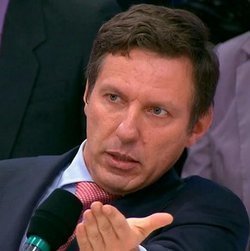‘The ruble is doomed to devaluation’
The Russian currency’s rate has stabilised, but...
After long volatility and a fall in the ruble rate, the Russian currency, which has already lost almost 25% of value since the beginning of the year, has more or less stabilised. Some assume that this happened as a result of the Central Bank’s intervention. The CB itself believes at the same time that the economy’s prospects will primarily depend on the epidemiological situation. Experts surveyed by Realnoe Vremya are sure that if the ruble objectively gets weaker, any currency manipulations of the CB will be senseless. They don’t exclude either that the Russian currency will cheapen to 85 rubles per dollar if Joe Biden wins the US elections, which will lead to a rise in consumer prices. Moreover, the ruble itself is “doomed to devaluation in the long term” due to structural problems of the Russian economy.
Has ruble stabilised?
After long volatility at exchanges and a fall in the ruble, its rate has finally more or less stabilised. Our currency has already lost almost 25% of its value since the beginning of the year, in September alone it reduced by 7%. However, by the end of the last week, the dollar cost less than 77 rubles, the euro did a bit more than 90.
Some international analysts consider that the Russian ruble began to cheapen after events in the forex market when the dollar began growing against most currencies of the world. Some experts think that the US currency gained weight amid the results of surveys that showed that US presidential candidate Joe Biden was ahead of Donald Trump and led the race.
Moreover, a number of analysts assumed that the Central Bank that increased the amount of its currency intervention strengthened the ruble rate — the CB is allegedly selling the currency for 5,3 billion rubles a day, which is 3,5 times more than in September. It is considered that the CB interfered when the rate approached a psychologically important bar: 80 rubles per dollar, after that, sales that can provoke extreme short-term upsurges to 95-100 could start. At the same time, the Ministry of Finance is selling the currency for 5,7 billion rubles a day, while the biggest state companies have changed the currency revenue for rubles according to the government’s decree (by the way, they did the same during the crisis in 2014-2015). Nevertheless, it is considered in the market that the rates can go back to 80 rubles per dollar or even reach the bar of 85-90 rubles in November, The best-case scenario is 73-75 rubles per dollar.
CB thinks the ruble rate’s influence on inflation will depend on COVID-19
The beginning of this week when the ruble rate decreased due to cheapening oil can also prove that the stabilisation can be temporary. Apart from oil, geopolitical risks also keep pressing the ruble: possible sanctions from the USA and European Union, the instability in Kyrgyzstan and Belarus and the conflict in Nagorno-Karabakh. It is considered at exchanges that all these risks won’t allow the CB’s actions designed to support the Russian currency to change the situation. Moreover, a high growth pace of the number of new COVID-19 cases can become another negative factor for the ruble.

If ruble falls, this increases the competitiveness of Russian goods
The Central Bank’s interventions are designed not to change the ruble rate in the long-term but to keep temporary fluctuations, economist Dmitry Travin clarified for Realnoe Vremya:
“When our currency becomes weaker due to objective reasons, the CB’s intervention will lead only to senseless spending of its gold reserves. If the CB thinks that the problem is temporary, interventions are possible, if the problems are fundamental, this shouldn’t be done, of course.”
At the same time, Travin doesn’t think that the cheap ruble will certainly positively influence the Russian economy in general. Moreover, in the economy, he noted, a change can’t be positive or negative for everyone. The case is that somebody benefits from such changes and somebody loses.
“If the ruble falls, it increases the competitiveness of Russian goods. Import becomes costly, and amid other equal conditions, a Russian buyer will highly likely choose a Russian good. But it is worse for the buyer: the buyer will have to choose a Russian good even though it has a lower quality because the imported one becomes expensive,” the economist explains.
“Biden’s victory is a serious risk for the ruble”
The sales of both the Russian Ministry of Finance and Central Bank stabilised, held the ruble, of course, considering that this October is quite a tough month for the ruble, thinks Aleksandr Razuvayev, director of Alpari’s Analytic Department. Moreover, Russia’s oil income is now lower than a year ago: though oil price is comfortable enough now, its supply volumes are much smaller than in 2019.

In the analyst’s opinion, the fall in the ruble rate has already seriously influenced inflation: it accelerated to 3,7% in September, and it is a record in the last year. Moreover, the CB’s target inflation was 4% this year. Inflation can raise this bar to 4,2% if the dollar goes up in price to 84-85 rubles, which would be undesirable for the Russian economy. In any case, the CB will unlikely keep lowering the key rate amid the tense situation in the currency market, and it will likely remain unchanged at 4,25%, Razuvayev considers.
Currency sale is hidden behind “intervention”
Not all analysts agree that the Central Bank’s intervention help the ruble get stronger. So Chief Economist and head of Alfa-Bank’s Centre for Macroeconomic Analysis Nataliya Orlova told Realnoe Vremya that the regulator hasn’t made any real intervention recently. Head of Corporate Financing Bank’s Analytics Office Maksim Osadchy also believes that the CB isn’t making any currency intervention at the moment.
“However, it is selling dollars from the National Wealth Fund from the sale of Sberbank shares to the Russian government. These scheduled sales help the ruble get stronger,” he agrees.
Secondly, according to him, a smaller risk of anti-Russian sanctions, which can be imposed in reply to Aleksey Navalny’s poisoning, help the ruble gain power. Thirdly, there is stabilisation and even some growth in oil price. This is why Osadchy notes there is recovery — correction of the ruble rate after the recent shock.
